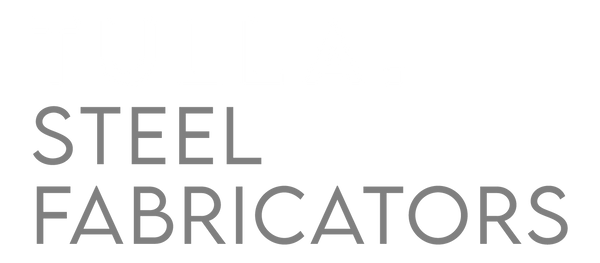Innovative Steel Fabrication Methods You Should Know About
Share
Advancements in steel fabrication are being propelled by the constant demand for increasing efficiency, precision, and sustainability. Be it construction, manufacturing, or infrastructure, companies that implement advanced steel fabrication techniques are laying the groundwork for long-term success.
From automation and AI-driven processes to new cutting methods and innovative welding solutions, the industry is shifting towards smarter, more efficient fabrication. Here’s a look at the latest trends in steel fabrication that are shaping the future.
Cutting with Precision: Advanced Cutting Techniques
How steel is cut can significantly impact material waste, production speed, and final product quality. These modern steel fabrication methods ensure cleaner cuts, reduced waste, and improved efficiency.
Laser Cutting
Laser cutting has become a staple in high-tech steel manufacturing, thanks to its ability to create intricate, precise cuts with minimal waste. By using a focused laser beam, this method produces clean edges and highly detailed components, making it ideal for automotive, aerospace, and custom metalwork applications.
Waterjet Cutting
Waterjet cutting is the answer for heat-sensitive materials. Using high-pressure water coupled with abrasives, it can blast through steel with so little heat that there’s no warping or structural changes. It's widely applied in construction, mining, and heavy engineering.
Plasma Cutting
Plasma cutting is still one of the fastest, most effective ways to cut thick steel. Due to fast processing and large-scale work, it is widely used in structural fabrication. Plasma cutting is a great option for businesses that are all about fast turnaround but without sacrificing quality.
Joining the Future: Modern Welding Technologies
Welding is the backbone of steel fabrication—and the tech behind it is advancing fast. Today’s innovative welding solutions are helping fabricators improve quality, safety and efficiency all at once.
Robotic Welding
Automation is transforming high-tech steel manufacturing, and robotic welding is a major part of that shift. Robots can perform every welding activity with high precision, increasing product consistency, minimising chances of human error, and also increasing safety in mass production.
Friction Stir Welding
Unlike traditional welding methods, friction stir welding (FSW) doesn’t melt metal. Instead, it uses friction-generated heat to fuse materials together, resulting in stronger, defect-free joins. It’s commonly used in aerospace, automotive, and shipbuilding, where structural integrity is critical.
Laser Welding
Laser welding is great for high precision and applications that have very little distortion. This creates clean, powerful welds in thin or delicate steel components, which is why it is often chosen for electronics, medical devices and precision engineering.
Digital and Smart Fabrication Processes
Digital advancements are reshaping steel fabrication, allowing businesses to reduce waste, optimise production, and improve quality control.
CNC Machining
CNC cutting has revolutionised fabrication by offering unmatched accuracy and repeatability. It’s widely used for custom components, intricate designs, and large-scale production, ensuring consistent results with minimal material waste.
AI and Machine Learning
AI-driven systems are now used to monitor fabrication in real-time, detect inconsistencies, and predict maintenance needs. These technologies help fabricators reduce defects, minimise downtime, and improve efficiency. AI is becoming an integral part of fabrication technology, setting new standards in quality control.
3D Printing
While still developing for large-scale applications, 3D printing is opening up new possibilities in steel fabrication. It allows for custom-designed steel components to be printed layer by layer, reducing material waste and offering design flexibility. This technology is making an impact in architecture, prototyping, and specialised manufacturing.
Greener, Smarter Steel Production
Sustainability is playing a bigger role in high-tech steel manufacturing, with fabricators looking for ways to reduce environmental impact without compromising on quality.
Energy-Efficient Fabrication Techniques
Fabricators are investing in energy-efficient furnaces, advanced heat recovery systems, and renewable energy sources to reduce emissions and operating costs. As government incentives push for cleaner production methods, these innovations are becoming an industry standard.
Recycling Steel and Reducing Waste
Recycling is at the forefront of steel fabrication techniques. Several manufacturers are recycling offcuts and using steel from scrapyards instead of newly mined raw materials and emitting less. This not only supports environmental goals but also lowers material costs.
New Coatings and Treatments for Durability
Fabricators are moving towards low-VOC (volatile organic compound) coatings that offer better corrosion resistance while reducing environmental impact. These advanced coatings extend the lifespan of steel products, making them a cost-effective and eco-friendly choice.
Looking Ahead: The Future of Steel Fabrication
The steel fabrication industry is about to enter an exciting new era led by automation, AI, and innovative welding solutions. Businesses that embrace these latest trends in steel fabrication will be best positioned for success in an increasingly competitive and environmentally conscious market.
Over the years, as fabrication technology continues to evolve, expect to see more efficiency, even more precision, and advanced steel fabrication techniques defining the future of steel.
